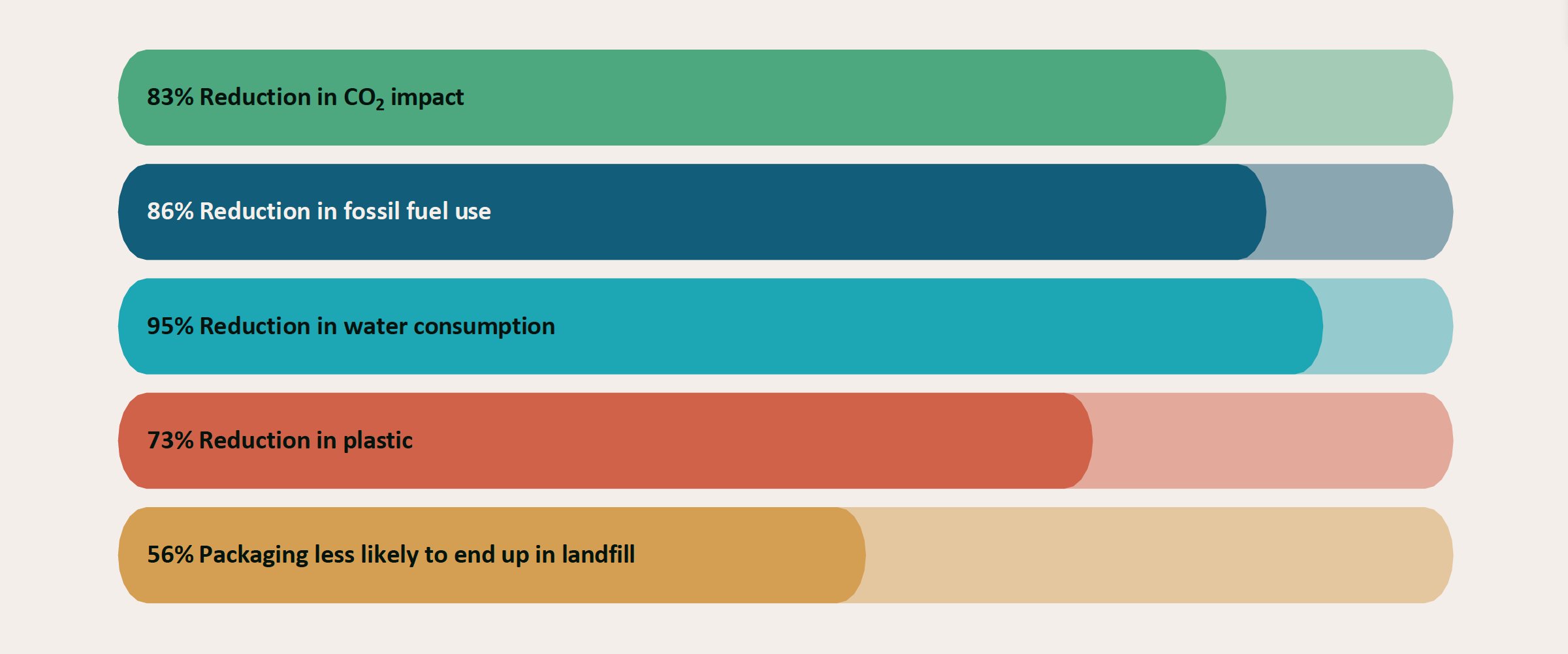
4 Sustainable Packaging Strategies You Can Use Right Now

Photo by Sigmund
The road to sustainability is complex and challenging, particularly in packaging design.
With incomplete data and misinformation at every turn, the road can quickly become a maze of dead end after dispiriting dead end. This experience can result in many sustainability professionals not knowing where to begin, let alone make progress.
A Sea of Data and Misinformation
For sustainability professionals, finding eco friendly packaging and supply chain solutions can feel like searching for a needle in the proverbial haystack.
The market is flooded with environmental claims and options. The need for more transparency and harmonised certification and regulations, in addition to the prevalence of greenwashing of many so-called packaging solutions, creates a murky environment that's becoming increasingly difficult to navigate.
Suppliers and solution providers often talk their own book. They are selective with data when selling their own solutions or packaging material, creating extra work for sustainability professionals to discern the signal from the noise.
That's why last year, after three years of developing sustainable materials of our own, we saw the opportunity to provide trusted and independent guidance to businesses and help them make informed decisions about which sustainable packaging materials are the optimal solution.
A Lighthouse Example: Market Lane Coffee's Journey
Market Lane Coffee's story shows a road out of this confusion. The specialty coffee roaster and retailer, known for its commitment to sustainability, faced the daunting task of revamping its packaging to align with its environmental values. The challenge was not just about choosing a sustainable option but finding one that balanced functionality, customer satisfaction, and environmental impact.
Through a data-driven approach, Phantm helped Market Lane evaluate its packaging choices. The transition to bleached kraft paper bags with a mineralised PE coating substantially reduced their coffee bags' impact (see graph below).
Check out the full case study for the details of a journey informed by rigorous testing and data analysis.

Image from Market Lane Coffee Assessment Report by Phantm
Four sustainable packaging strategies to get you started
To help you navigate your way out of the greewash maze and on to the road to sustainability, start by exploring these four strategies:
1. Make data-driven decisions at the packaging design stage
Before you begin the development process, you can compare the various options you have by running an analysis against ISO-certified datasets. This will help you make informed choices about which sustainable material is good for the planet and is also aligned with performance and customer expectations.
2. Simplify material choices
Market Lane's move towards using fewer types of materials in its packaging facilitated recycling and ensured that the quality of their roasted coffee remained uncompromised.
By simply reducing the number of materials used in your packaging and/or their thickness, you can substantially reduce the environmental impact of your packaging
3. Collaborate with Experts
The results of Market Lane Coffee's partnership with Phantm underscores the value of collaborating with sustainable packaging solution specialists who can offer independent guidance and insights tailored to your specific challenges and opportunities.
4. Commit to Continuous Improvement
Sustainability is a journey, not a destination. Market Lane's story is a testament to the ongoing process of innovation, measurement, and refinement in pursuit of sustainable practice.
A way out of the maze
Market Lane Coffee's experience is more than a success story; it's a model for other companies striving to navigate the complex world of sustainable packaging and reduce their packaging waste.
It is possible to significantly reduce environmental impact without sacrificing quality or consumer satisfaction. All that's required is a willingness to dive deep into the data, challenge assumptions, and, most importantly, partner with experts who can guide the way.
Are you ready to get started on making informed product and packaging decisions?
Get Started

